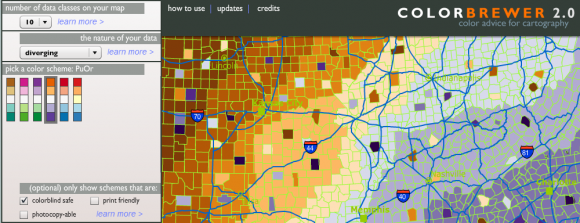Choosing the number of data classes is an important part of map design. Increasing the number of data classes will result in a more „information rich“ map by decreasing the amount of data generalization. However, too many data classes may overwhelm the map reader with information and distract them from seeing general trends in the distribution. In addition, a large numbers of classes may compromise map legibility—more classes require more colors that become increasingly difficult to tell apart.
Many cartographers advise that you use five to seven classes for a choropleth map. Isoline maps, or choropleth maps with very regular spatial patterns, can safely use more data classes because similar colors are seen next to each other, making them easier to distinguish.
 Color Brewer http://colorbrewer2.org/
Color Brewer http://colorbrewer2.org/
Jetzt geht es um die Story
Gutes Beispiel
http://www.nytimes.com/interactive/2012/11/07/us/politics/obamas-diverse-base-of-support.html?_r=0
Wind
An invisible, ancient source of energy surrounds us—energy that powered the first explorations of the world, and that may be a key to the future. This map shows you the delicate tracery of wind flowing over the US.
hint.fm/wind
